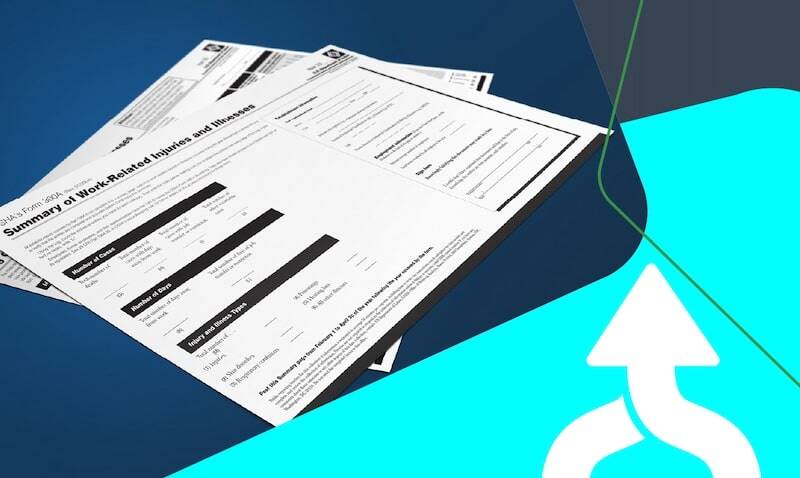Blog Post
Don't Let Clients Make These Common OSHA Submission Mistakes

Each year by March 2, most employers must electronically submit their OSHA logs to the Department of Labor. The process can be confusing, and getting it wrong puts your clients at risk of OSHA fines, increased OSHA scrutiny and even potential legal action.
As an agent, complying with the OSHA electronic submission is an excellent way to provide additional value to your clients (and show prospects where their current agent may be falling short).
Here are 11 mistakes for employers to watch out for.
Be sure to also download this guide for free and send to clients and prospects to help them avoid common OSHA submission mistakes: 11 Key Mistakes to Avoid When Submitting OSHA Logs.
Mistake #1: Submitting All Establishments Under One Entry
An establishment is a single physical location where business is conducted or where services or industrial operations are performed. A company or firm may have multiple establishments, such as different factories, stores, or office locations. Each establishment may have different reporting requirements based on its size and industry. OSHA requires that each establishment be reported separately to ensure accurate and compliant data submission.
Submitting multiple establishments under one entry can lead to dramatic over-reporting or severely incorrect reporting.
Mistake #2: Submitting Data for Establishments When Not Required To
OSHA requires that data be submitted by establishment based on that location’s specific size and NAICS code, not the company as a whole. That means some company locations may be required to submit OSHA records, while others may not. Submitting data for establishments that are not required to report, leading to errors and even OSHA inspections.
Incorrect submissions can lead to unnecessary work, errors and even OSHA inspections.
Mistake #3: Submitting Summarized Company Data for Each Establishment
OSHA requires data to be submitted by establishment, but a common mistake is to report combined company data (such as total hours worked) instead of data for just that location. Size, hours, and total hours worked must be split out for each individual establishment.
Combining company data will lead to inaccurate data submission and may even result in submitting data for establishments that are not required to report due to their size.
Mistake #4: Choosing the Wrong Size for Establishments
To determine whether an establishment needs to submit data to OSHA, one must determine its peak employment (size) during the last calendar year. Each individual employed at any time during the calendar year, including full-time, part-time, seasonal, and temporary workers, counts as one employee. OSHA requires that the peak employment figure be used to determine the size category for submission purposes.
Only certain establishment sizes must submit data to OSHA, and incorrect categorization can lead to improper submissions.
Mistake #5: Not Choosing the Correct NAICS Code for Establishments
Submission rules are based on the NAICS code of a company. Approximately 66% of all NAICS codes, including all construction, manufacturing, agriculture, and a host of other general industry sectors, must comply with OSHA recordkeeping requirements. To comply with OSHA, a company must use the correct NAICS code.
An incorrect NAICS code can lead to disastrous implications, including incorrect data, non-compliance and potential fines.
Mistake #6: Not Knowing Which Incidents Must Be Recorded on OSHA Forms
OSHA has guidelines of what is and is not recordable, and not all claims or injuries should go into OSHA logs. Many employers mistakenly believe that all workers' compensation claims must be recorded on OSHA logs. This is not true, as OSHA recordkeeping and workers' compensation claims overlap but are not mutually exclusive.
This can lead to both over-reporting and under-reporting incidents. Over-reporting can inflate incident numbers and put a company on OSHA’s radar for inspection, while under-reporting leads to noncompliance and potential fines.
Mistake #7: Missing the Submission Deadline
OSHA requires that employers submit data from the previous year's logs no later than March 2nd of each year. If submissions are made after March 2nd, they will be marked as late, which could result in penalties or fines.
Missing the deadline can result in non-compliance and potential fines. Additionally, late submissions may trigger a visit from OSHA, increasing the risk of further scrutiny and potential compliance issues.
Mistake #8: Incomplete or Inaccurate Data
Many employers, when they don't use a digital OSHA recordkeeping platform, make mistakes on the paper or Excel spreadsheet versions of the form. There are no checks and balances in these formats, which can lead to a multitude of errors.
Inaccurate data can lead to non-compliance and misrepresentation of workplace safety records, potentially causing red flags for OSHA and risking further scrutiny, audits or penalties.
Mistake #9: Not Submitting Data from Form 301 as Required by New Regulations
OSHA now requires many companies to submit data from Form 301, including details of the incident, the affected employee's job title, the date of the incident, the location of the incident, and a description of what happened. This requirement applies to a smaller subset of industries, including half of all manufacturing and a third of all construction industries with over 100 employees.
Non-compliance with new regulations can result in significant penalties.
Mistake #10: Not Submitting the Legal Company Name
Employers must include the legal company name in their OSHA log submissions. If an employer submits their logs without the legal company name, they may face penalties for non-compliance.
OSHA made this a requirement in 2019, and non-compliance can lead to penalties.
Mistake #11: Not Submitting Data for Local and State Governments in State-Run OSHA Programs
Companies in states with their own OSHA programs must comply with state-specific submission requirements, such as submitting OSHA data directly to the state agency in addition to federally.
State-run OSHA programs have specific requirements for local and state governments, and non-compliance can result in penalties.
Send these common mistakes (and how to fix them) to your clients and prospects today with this free download: 11 Key Mistakes to Avoid When Submitting OSHA Logs.
Want to make OSHA recordkeeping and submission 100x easier for your clients? Check out OSHAlogs, an OSHA reporting software that simplifies recordkeeping and delivers immense value on your behalf.
Related Resources
Check out more tips & strategies for agents
Never Miss Our Latest Update
From us straight to your inbox.





